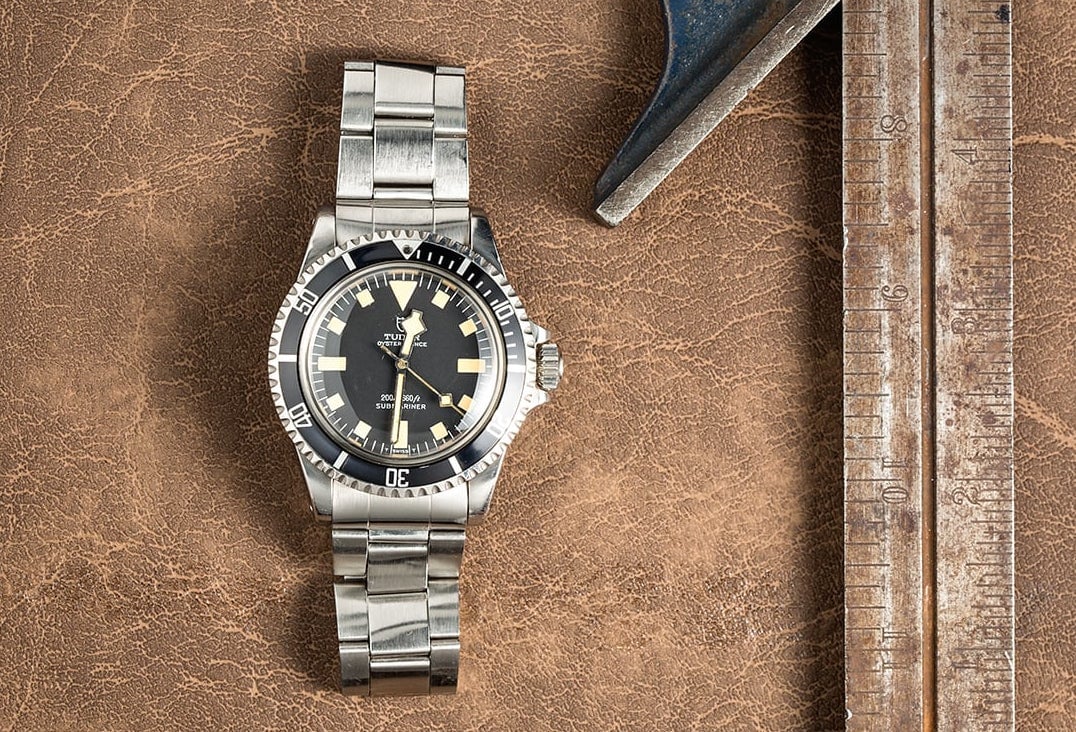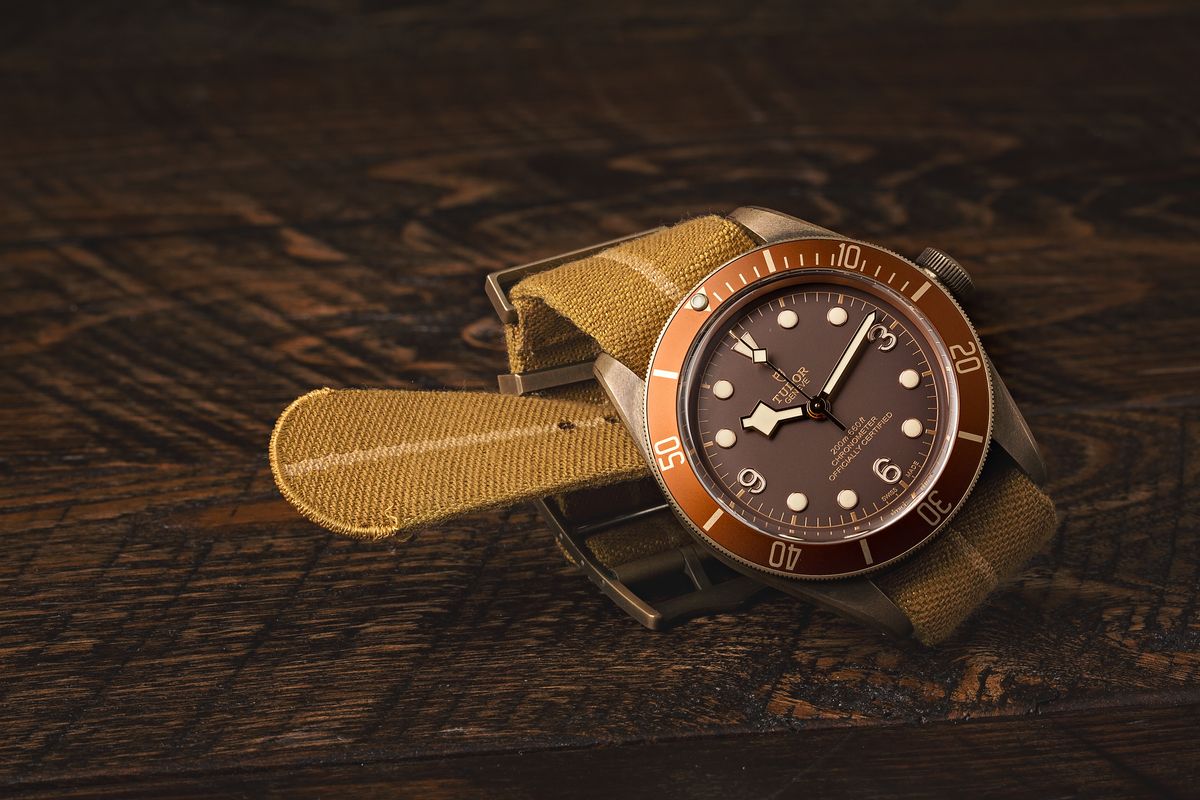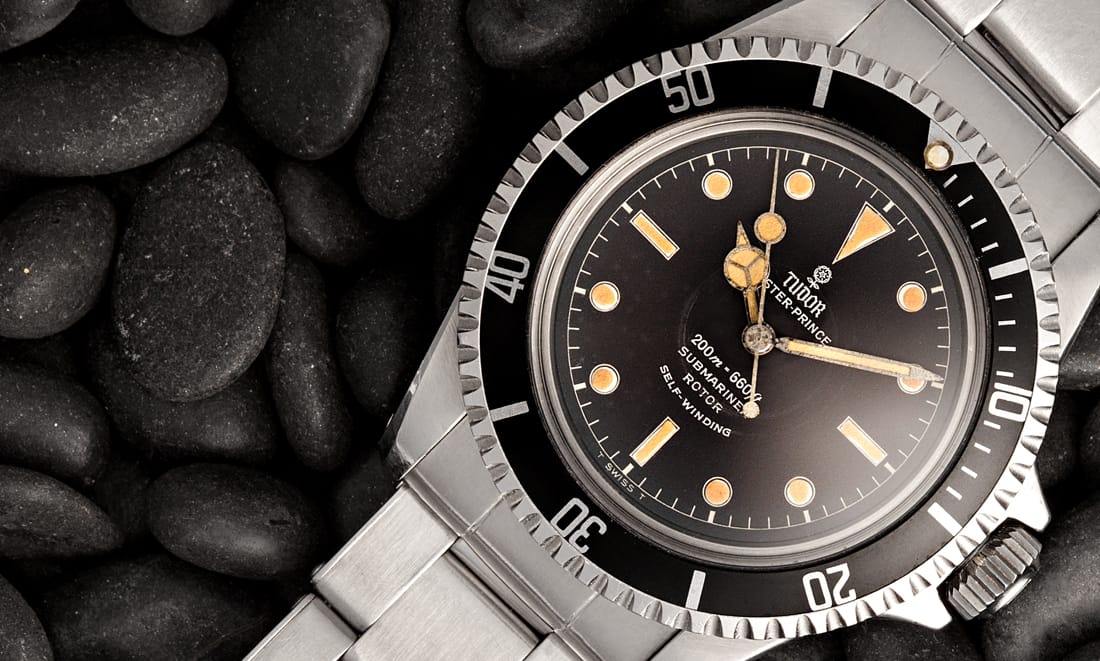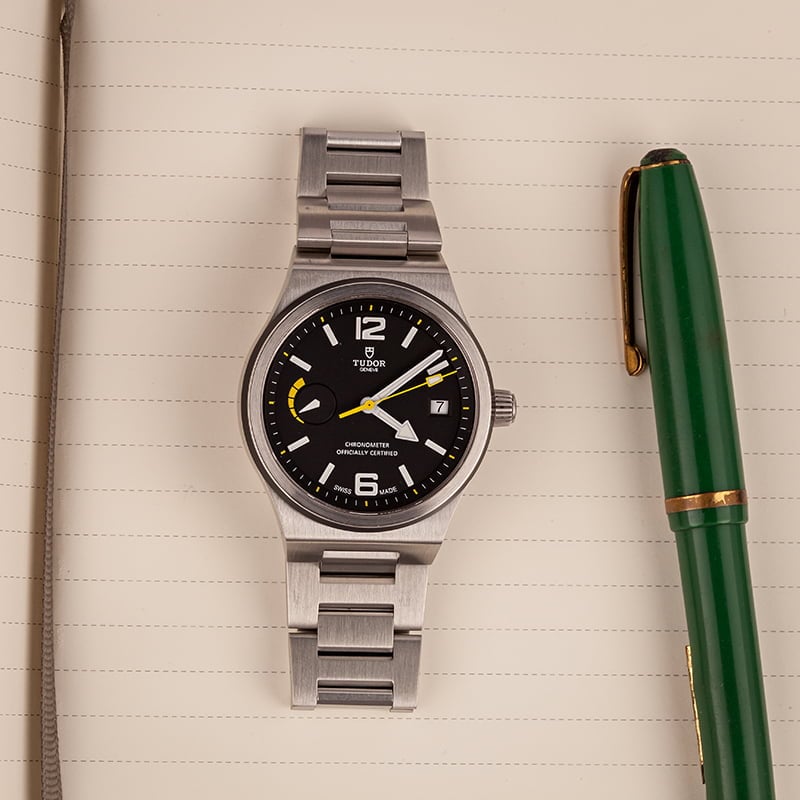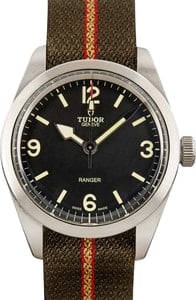Throughout its history, the Tudor Submariner has always been compared to the Rolex Submariner, which is only natural, yet somewhat unfair. Aesthetically they are similar and Tudor was positioned as a less expensive alternative than its Rolex counterpart. However, interest in vintage Tudor watches has increased over the past few years, with watch collectors appreciating the brand and models for what they are, rather than the “cheap Rolex.”
Tudor Submariner Snowflake History
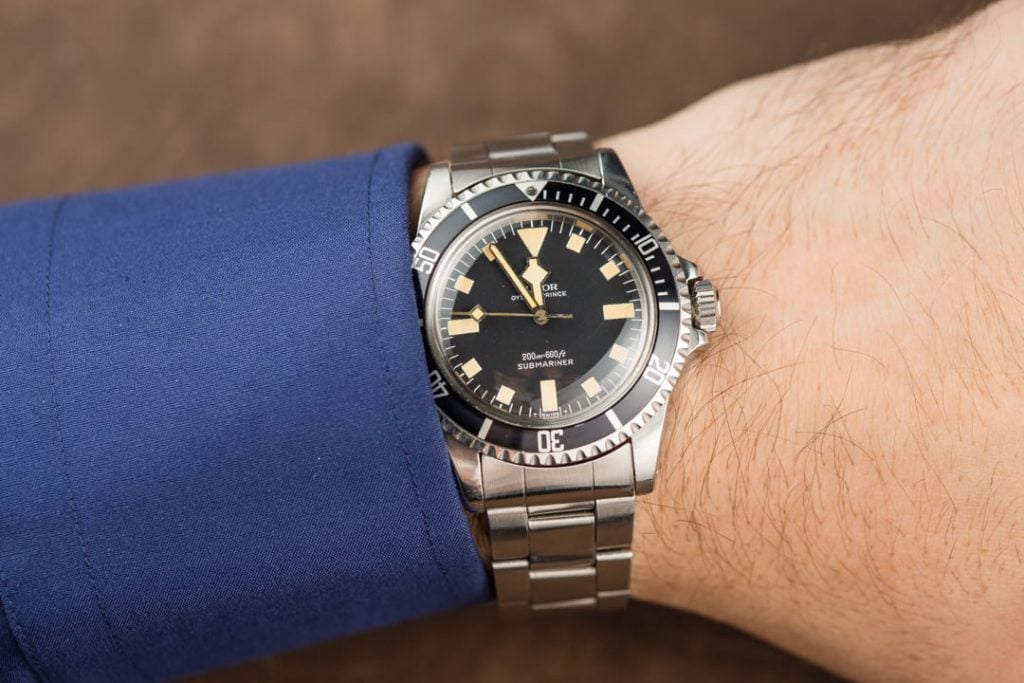
A very interesting piece from Tudor’s archives is the vintage Tudor Submariner “Snowflake.” When comparing Tudor watch history to Rolex, the Tudor Submariner was launched just a year after the Rolex Sub, in 1954. Being a robust and reliable diver’s watch, the Tudor Subs were eventually used by the French Navy and US Navy. The Tudor Submariners used by the military were not customized to their specs, they were purchased as is. The only differentiation between a civilian Tudor Submariner and a military issue one was an engraving on the caseback. The French Navy issued Tudor Submariners, for instance, were engraved with M.N (Marine National Français) plus the year they were bought.
To increase the legibility of the Submariner underwater, Tudor introduced the “Snowflake” dial. It is speculated this was a special request of the French Navy, although this hasn’t been officially confirmed by the brand. Characterized by the square hour markers and angular shaped hour hand, the Snowflake design was produced by Tudor from 1969 until 1981.
Tudor Snowflake References
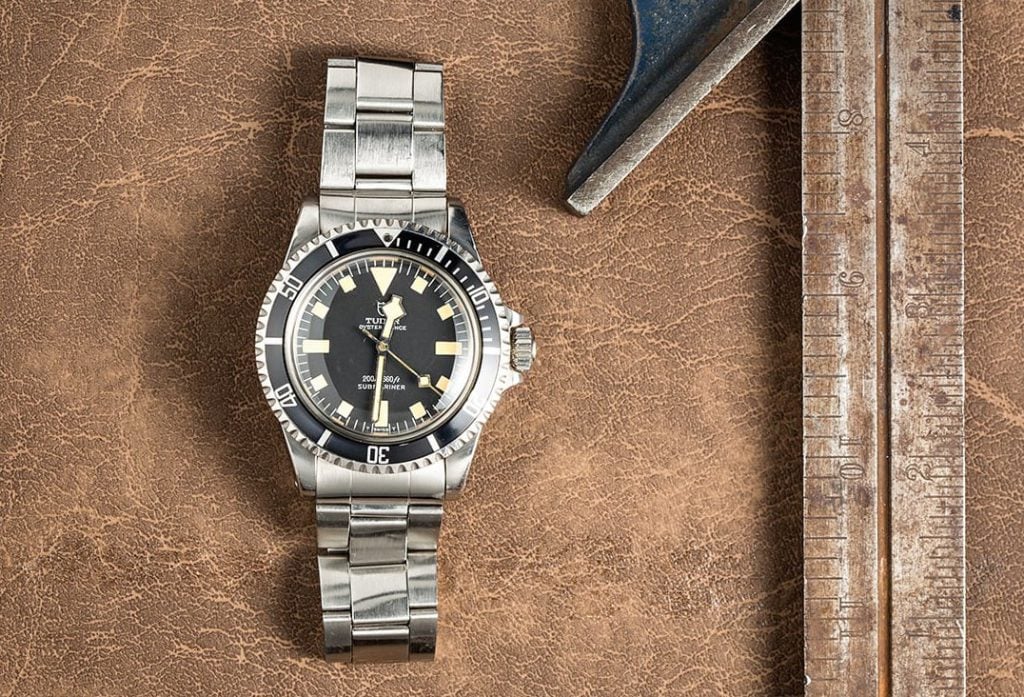
The Snowflake is a watch that has captivated enthusiasts and collectors alike since its inception. Its distinctive square hour markers and bold hands, affectionately known as the “Snowflake,” have become iconic features in the world of horology. Let’s delve into the four key references: 7016, 7021, 9401, and 9411, exploring their unique characteristics, historical significance, and enduring appeal.
The Birth of the Snowflake: References 7016 and 7021
The Tudor Snowflake journey began in 1969 with the launch of references 7016 and 7021. This was a pivotal moment for Tudor, as it marked the transition from their traditional rose logo to the now-famous shield emblem on the dial. Before the snowflake dials were available, the traditional Mercedes hands were used, as seen in our Tudor 7928 review. The introduction of the Tudor Snowflake references signified a shift in the technical aspects of the brand’s iconic watchmaking.
Both the 7016 and 7021 were powered by new ETA calibers, replacing the older caliber 390. The 7016 featured the ETA caliber 2483, a reliable movement without a date function, while the 7021 housed the caliber 2484, which included a date display. These movements were known for their robustness and accuracy, qualities that have contributed to the lasting legacy of these watches.
The cases of both models measure 39 mm in diameter and offer an official depth rating of 200 meters (656 feet). However, due to the age of these watches, it’s highly recommended that owners have their timepieces’ water resistance tested and confirmed by a qualified watchmaker. The design also includes drilled lugs, making band changes straightforward, and a flat acrylic crystal that protects the dial. The reference 7021 is distinguished by its magnifying lens over the date window, a feature that enhances legibility.
Originally, Tudor fitted these watches with the iconic Rolex Oyster bracelet, which added to their rugged and versatile appeal. Today, collectors can find Snowflake models on either the original bracelet or various replacement bands. Over time, the 7021 with its date display has become more sought after, commanding higher prices than the no-date 7016.
Evolution and Refinement: References 9401 and 9411
In the mid-1970s, Tudor introduced the next chapter in the Snowflake saga with references 9401 and 9411. These models were direct successors to the 7016 and 7021, but they brought with them some notable improvements, particularly in the movements.
The 9401, which replaced the 7016, was powered by the ETA caliber 2776, while the 9411, the successor to the 7021, housed the ETA caliber 2784. Both of these movements featured a stop-seconds mechanism, a significant upgrade that allowed wearers to set the time precisely to the second – a feature that was highly appreciated by professional divers and watch aficionados alike.
Aesthetically, the 9401 and 9411 retained much of the charm of their predecessors. Tudor produced four variants of these models, offering either blue or black dials with the distinctive Snowflake hands and square hour markers. Additionally, Tudor offered versions with dot and triangle indices paired with Mercedes hands, which closely resembled the Rolex Submariner. Although these latter models are often referred to as Snowflakes, purists argue that they deviate from the true Snowflake design.
All versions of the 9401 and 9411 share the same 39-mm stainless steel Oyster case, a hallmark of durability and functionality. Most were paired with the classic Rolex Oyster bracelet, though some were equipped with the Fliplock extension system, enhancing their utility for divers.
Tudor Snowflake Key Features
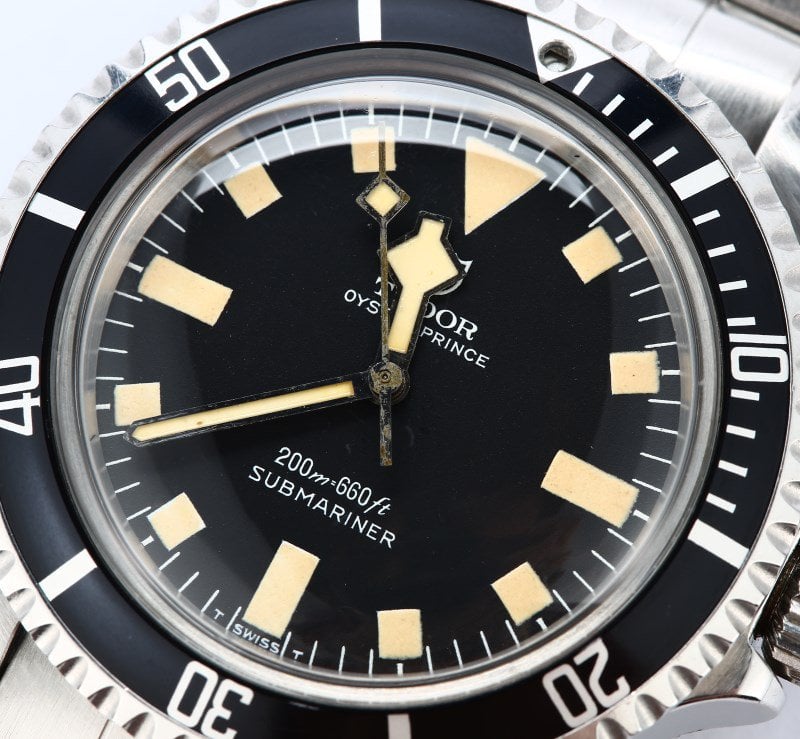
The Tudor Snowflake references continue to share several key features that have cemented their status as legendary dive watches. The combination of the unique Snowflake hands and dial, along with these key features, has cemented the Tudor Snowflake’s place in horological history. Some of the common features you can find on any of the Snowflake references include:
- Case Diameter: Each model boasts a 39 mm stainless steel Oyster case, striking a balance between ruggedness and wearability.
- Crystal: Flat acrylic glass protects the dial, maintaining the vintage aesthetic while offering clear legibility.
- Water Resistance: Rated to 200 meters (656 feet), these watches were designed for serious underwater exploration, though it’s advisable to have their water resistance tested due to their age.
- Bracelet: Originally mounted on the Rolex Oyster bracelet, these watches are also compatible with a variety of replacement straps.
- Stop-Seconds Mechanism: Introduced with the 9401 and 9411 references, this feature allows for precise time setting.
Conclusion
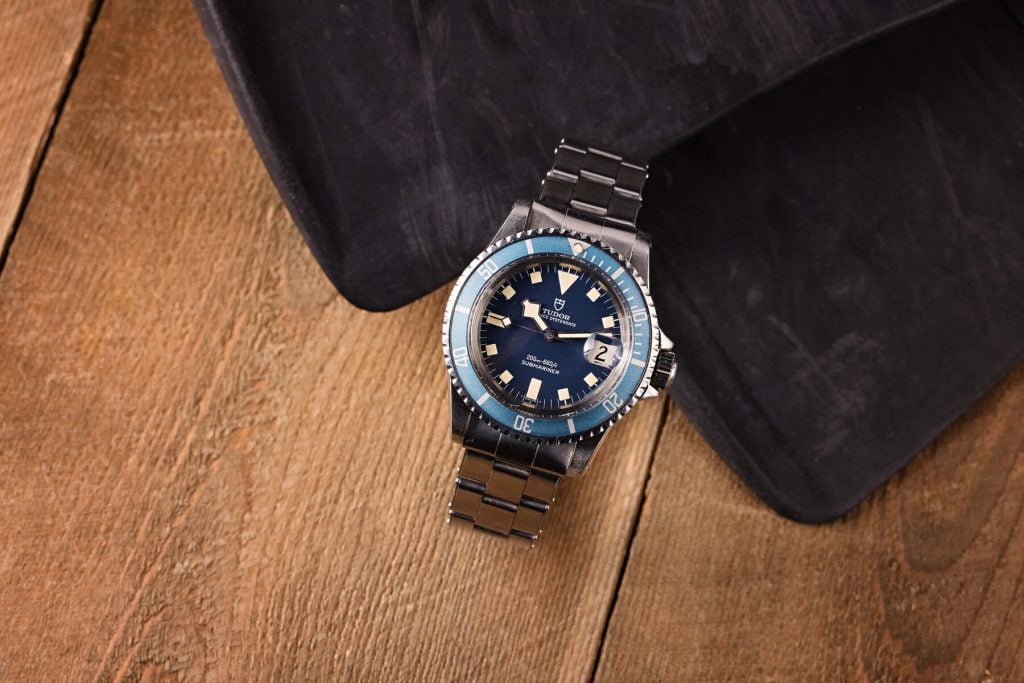
The Tudor Snowflake Submariner is more than just a vintage timepiece; the watch is a symbol of the brand’s commitment to innovation, quality, and design excellence. From their introduction in 1969 to their evolution in the 1970s, these watches have left an indelible mark on the world of horology. Whether you’re a seasoned collector or a new enthusiast, the Tudor Snowflake remains a timeless icon, offering both historical significance and enduring style.
